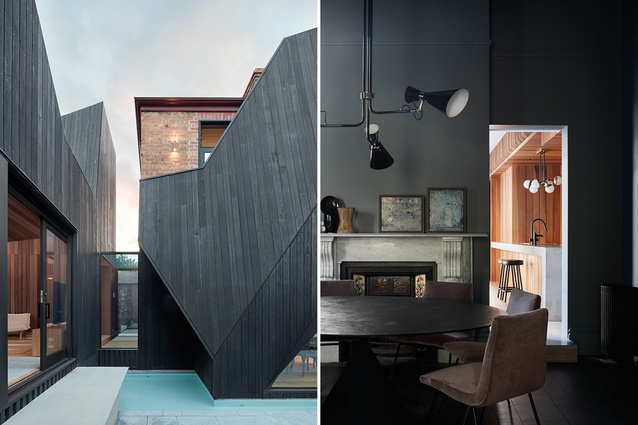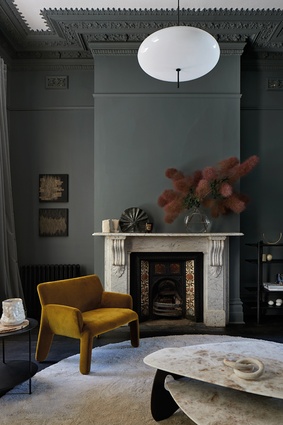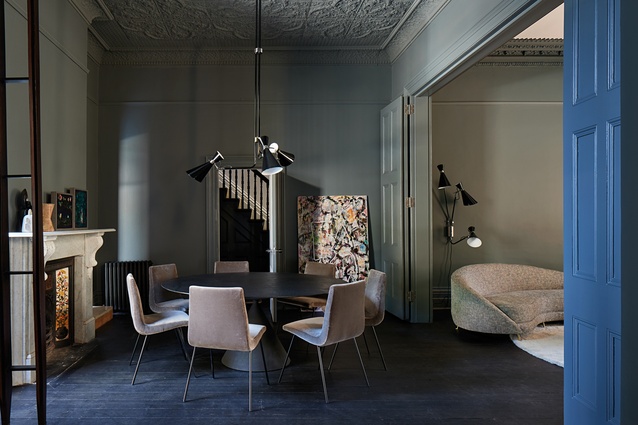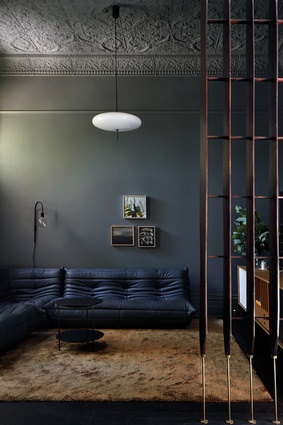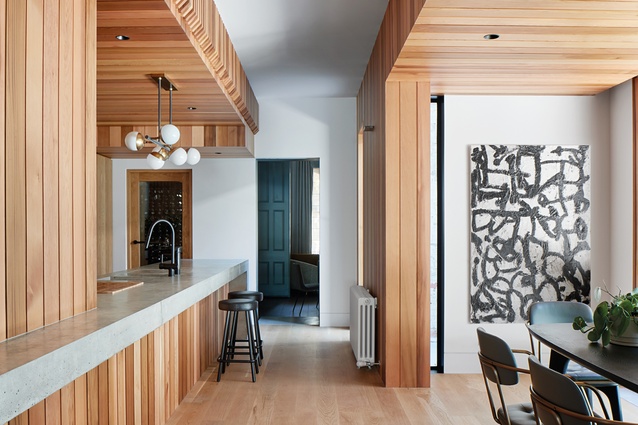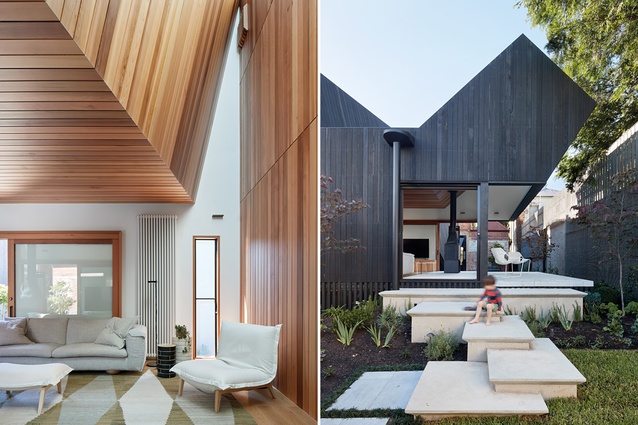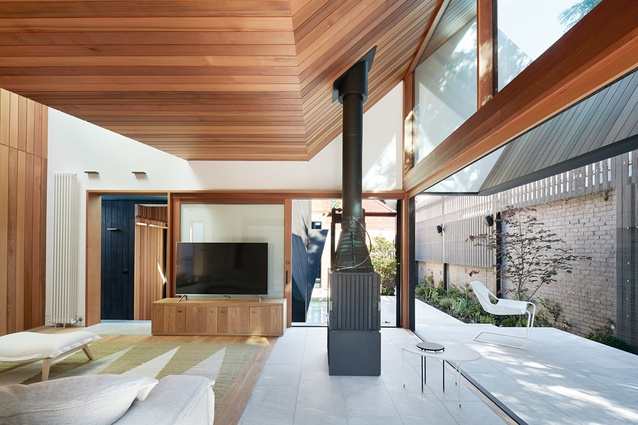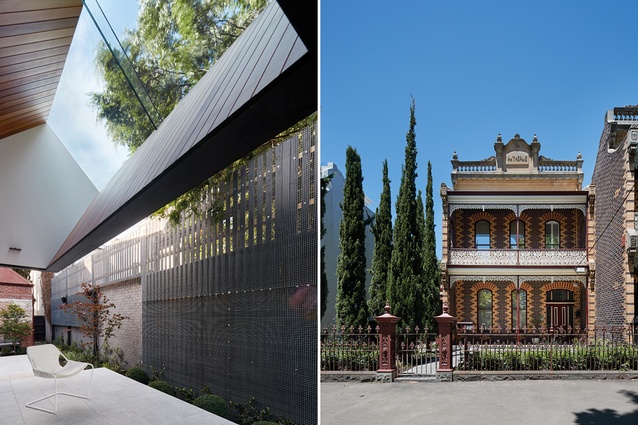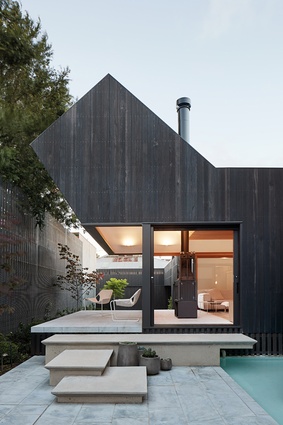Architectural origami: Victorian terrace
Hatherlie House unfolds gracefully from a formal Victorian-era terrace into an expansive, contemporary living space.
Hatherlie has a distinctive presence, perched at the top of a hill in Fitzroy North, Melbourne. The two-storeyed terrace on a double-width block is set back from the street and half concealed by upright pencil pine trees. With polychromatic brickwork and cast-iron lacework, Hatherlie is formal, vertical and contained at the front but a new extension designed by Andrew Simpson Architects (ASA) sees spaces unfold to become informal, horizontal and expansive at the rear.
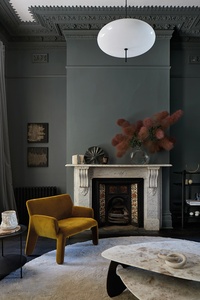
Hatherlie is home to a family of three who have always had an interest in the Boom Style terrace built in 1888. Ornately detailed and highly picturesque, Boom Style architecture was unique to Melbourne in the late 19th-century, when the city was fuelled by the prosperity of the gold rush and an influx of migration. The Boom Style intertwined Italian and English architectural traditions, translated for Australian residences.
The clients also intertwine these traditions – she is English and he is Italian-Australian – and they married in Tuscany, as they have a strong affinity for the region. They engaged ASA to restore the front house with a formal lounge and dining and television rooms downstairs, and bedrooms upstairs.
The brief included replacing the existing rear addition with a new extension accommodating everyday living spaces, and developing the original stables into a garage and bedsit. Designer Simone Haag collaborated on the project, directing the interior decorating and styling.
The conceptual design of the house evolved from references to Italian art, cinema, literature and architecture. “Characteristics of Hatherlie resonated with the 15th-century Italian villa: for example, the siting at the top of a hill, the central courtyard, the pencil pines, the water and the importance of landscape,” Andrew explains.
“Our interventions focused on these qualities with a loose reference made to Alberti’s Of the Country House for a Gentleman, which describes the importance of an integrated approach to landscape and architecture.”
Restoration work kept the front of the house as intact as possible. The formal rooms were inherently dark, which Simone “leaned into”, she describes, with deep-grey walls, flooring and curtains, and a textured, tonal palette. ASA re-routed the entry sequence through these rooms in order to use them on a daily basis and emphasise the contrast between old and new.
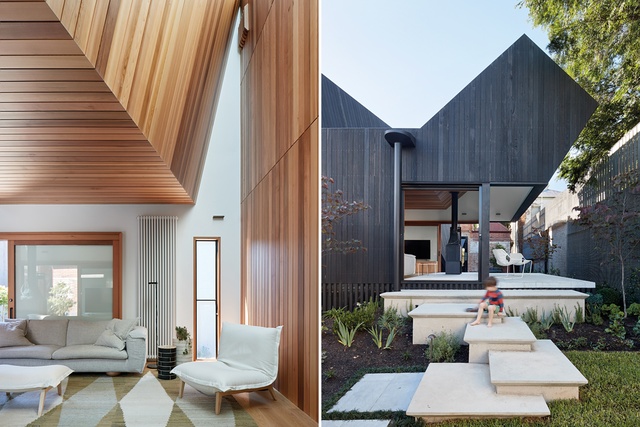
“This circuitous and lyrical pathway is intended to reveal the house episodically,” says Andrew, and two new openings in the dining room provide glimpses of the revelation towards the rear: timber-lined living spaces that embrace the landscape and light.
The new extension is in two parts. The central addition widens the kitchen and dining area and is surrounded by a low, external pool. The rear addition accommodates an indoor-outdoor living area and spreads horizontally and vertically to encompass and borrow from its surroundings. “A glass link fuses the two, allowing you to experience the exterior as you walk further back into the property,” says Andrew.
The sculptural, origami-like form of the extension developed from three drivers: an existing gable roof and courtyard; the desire for light and ventilation; and the experience of moving from contained to expansive spaces. The faceted, north-facing central wall follows an oblique line that continues (although disconnected) into the roof form of the living room to create a triangular skylight on the southern side.
The northern roof geometry at the rear mirrors the small gabled roof at the front but with the lower corner sliced off. These taller elements act as thermal chimneys for natural ventilation, and the north-facing glass ceiling allows sunlight inside and frames a view of the neighbour’s tree.
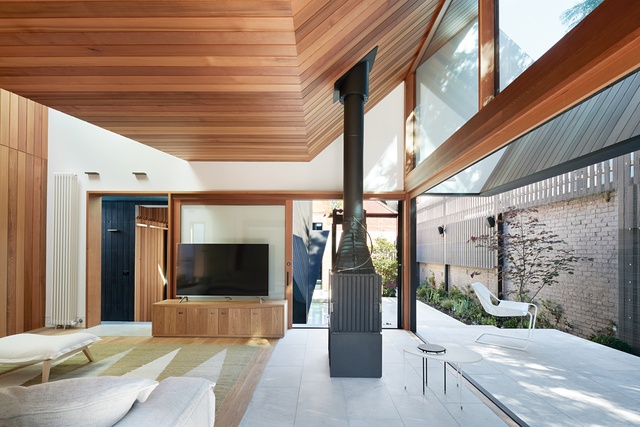
Beneath the skylight, the terrace has fully retractable glass doors so that the family can enjoy a covered external living space, with a fireplace for winter. Like a Tuscan villa, this terrace has a raised aspect with cascading stairs to the courtyard and garden (landscape by Renata Fairhall Garden Designs).
Cedar boards lining the walls and high ceilings accentuate the folding forms of the new volumes and are a contemporary counterpart to the ornate plaster ceilings at the front. The cedar, like the other natural materials used – off-form concrete benchtops and splashbacks, handmade brass sinks, limestone steps, bluestone paving and charred silvertop ash cladding – will develop patina over time. Simone kept the furnishings light and neutral: “They let the architecture do the talking.”

